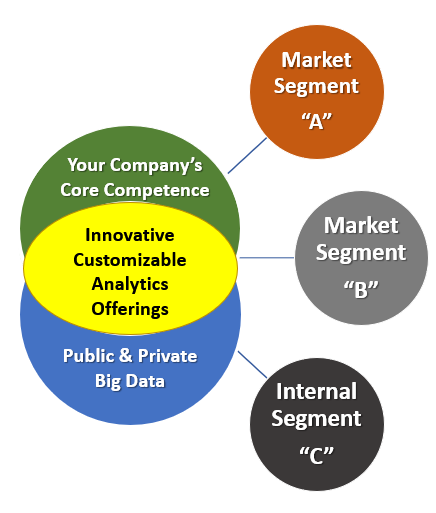Target markets segments are very narrow—likely missing opportunities across multiple customer segments. In addition, many do not see a time soon where they will become profitable.
Clearly, there is a period where investments will outweigh returns, but our view is that many of the firms do not have the right go-to-market strategy and have not put the appropriate business model in place nor the financial management systems needed to accelerate both growth and profitability.
The following is an abridged version of this article. The full White Paper can be downloaded below.
Our experience, with a number of clients and benchmarks, indicates many are experiencing challenges in the following three areas:
1. Go-to-Market Strategy

Many firms have competing initiatives and multiple data owners that are organized in a siloed framework. Data is not treated as an enterprise resource and most initiatives are departmentalized, focused either on internal productivity projects or limited scope customer offerings. The most successful implementations treat data as a shared resource—available to create offerings for multiple market-segment opportunities and multiple internal productivity initiatives
2. Services & Solutions Business Model
The recent rapid infusion of technology into the business model (hybrid cloud, social media, big data/analytics, augmented reality, mobility, IoT* etc.) has created new disruptive delivery models such as “Anything-as-a-Service” (XaaS). Again, our experience with clients and industry benchmarks indicate that most firms understand that they need to transition from a dominant “product-focused” business model to a more “solutions & services customer-centric” model. Making incremental changes to the existing business model to attempt to run a solutions and services business has not proven effective, although many customers start with this approach. Consultative selling, market management, use of IT infrastructure, software / offerings development, and skilled resource management are a few of the key business processes where slow progress is being made.
3. Financial Management / Pathway to Profitability
Developing, deploying, and managing the financials of Big Data / Analytics solution offerings is more complex than managing either products or services offerings. The business model contains many more elements, including multiple strategic partnerships. Most BD/A solutions have the added elements of software development, hybrid computing infrastructure, (public & private), massive amounts of data, plus a substantial amount of shared internal resources. We have identified a number of gaps which have been consistent across companies in this area.
These and several other variables—such as sub-contractor / partner spending plans are not aligned to multi-year revenue outlooks by solution offerings—are a few of the most common gaps. Gaining traction to improve your ability to achieve the highest return on your investment is best enabled by using a pragmatic approach, applying the right business model, industry best practices, and benchmarks from successful implementations and comparing them to your approach and progress timelines.







